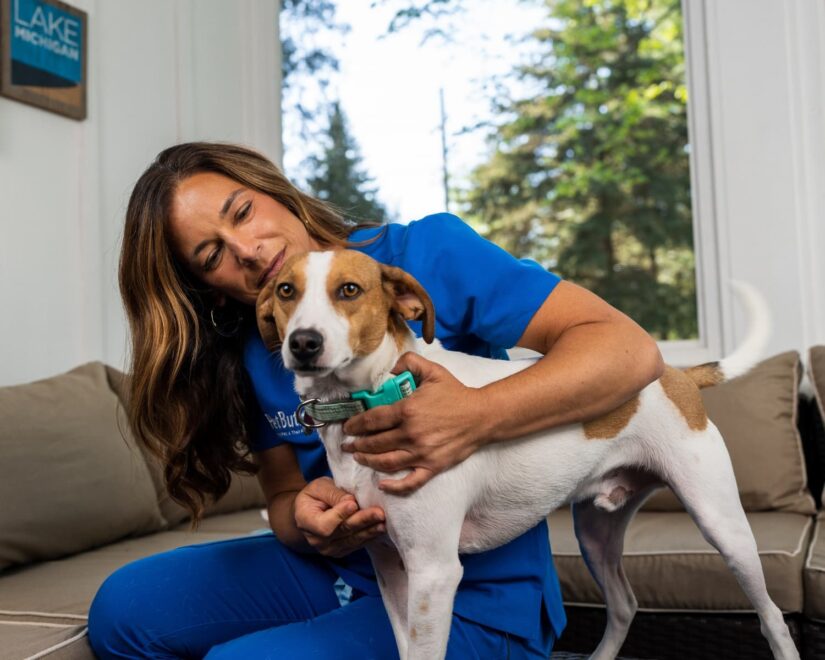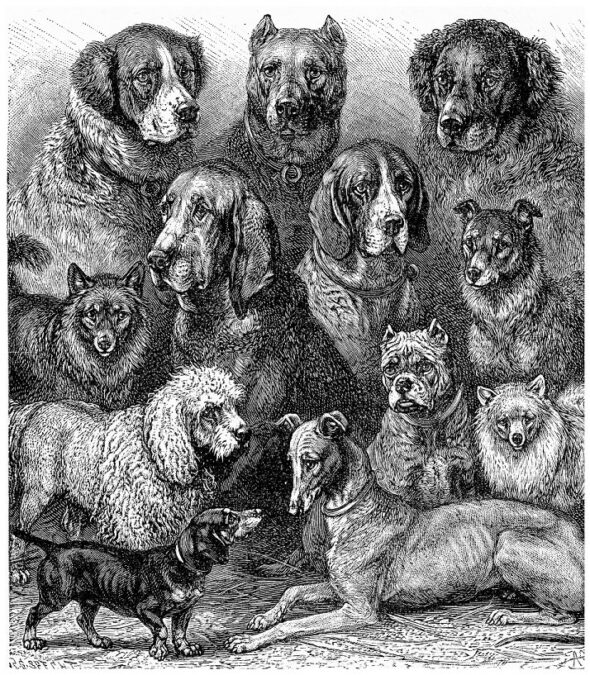The rabies vaccine is legally required for dogs, cats, and ferrets in most states. Rabies is fatal to humans and a serious worldwide public health concern. The vaccine, unlike others, is 100% protective if administered according to label directions. Most puppies and kittens receive their first dose between 12-16 weeks old, depending on local ordinances, and it must be administered by a licensed veterinarian.
If the vaccine is 100% effective, why do we still have over 59,000 human deaths worldwide and 1-2 human deaths annually in the US? The answer is multifactorial, and it will help to understand a little about the virus, its transmission, and host populations that perpetuate this deadly disease.
Transmission
Rabies virus is transmitted via the saliva of an infected mammal through a bite wound that breaks the skin. Important reservoirs for infection include stray or unvaccinated dogs and cats, bats, skunks, and raccoons. The virus quickly reproduces and uses the peripheral nervous system and spinal cord as a conduit to reach the brain, finally spreading to the salivary glands and other organs in the infected individual.
The incubation period, or time it takes to see clinical signs of the virus, takes anywhere between 10 days to approximately 4 months in dogs. This information guides veterinary recommendations for assessment, observation, and isolation if a bite wound has occurred. Signs in other species can take up to a year or more to develop, depending on the amount of virus that was transmitted via the bite, the site of infection, and severity of the bite.
Symptoms
Ultimately, infection with rabies virus leads to brain injury and death. The signs of infection depend on the species. For dogs, personality change is common (from fear or depression to aggression), followed by insatiable appetite, paralysis including face or limbs, difficulty swallowing, excessive salivation, and seizures.
In humans infected with rabies, early symptoms are nonspecific, consisting of fever, headache, and general malaise. As the disease progresses, neurological symptoms appear and may include insomnia, anxiety, confusion, slight or partial paralysis, excitation, hallucinations, agitation, hypersalivation, difficulty swallowing, and hydrophobia (fear of water). Death usually occurs within days of the onset of symptoms.
Transmission Over Time
Over the last 100 years and with the onset of vaccinations and education, the CDC has seen a dramatic reduction in the transmission of rabies. Prior to 1960, most reported rabies cases in the U.S. were in domestic animals such as dogs, cats, ferrets, horses, and cattle. Now, over 90% of confirmed cases are from wildlife hosts such as bats (6% of the bat population carries rabies), skunks, raccoons, coyotes, and foxes. 70% of human acquired infections result from bat bites which can be difficult to detect as bite wounds can be miniscule and often occur without the victim’s knowledge.
Unfortunately, the only way to confirm a diagnosis of rabies in a suspected animal is to microscopically test brain tissue after death. Therefore, it’s important to contain the suspected animal, if alive, for observation, isolation, or humane euthanasia, or keep it until animal control can retrieve it for testing.
What to Do If You or Your Pet Is Bitten
If you or your pet is bitten or scratched by an animal that might carry rabies, even if the animal is not showing signs of illness, call your physician or veterinarian and animal control immediately. These professionals will work with the public health department to determine what follow-up care and testing is needed. If the bite occurred from an owned dog or cat, ask the pet parent for vaccine records to see if the pet was vaccinated and obtain contact information.
Wash any affected wounds with soap and water. Other treatments may consist of a post-bite serum containing anti-rabies antibodies and post-exposure rabies vaccines which work to stimulate the body’s immune system. There is no effective cure once clinical signs occur.
Prevention
Identification and vaccination of stray dog populations, minimizing contact with wildlife hosts, and spaying and neutering pets to decrease roaming behaviors all contribute to a reduction in rabies cases. Vaccination of pets, as well as supporting wildlife management initiatives like vaccinating raccoons via food baits, may help to eradicate this disease.
People in high-risk occupations such as animal control officers and veterinarians can obtain a prophylactic rabies vaccine intended to protect themselves should they be bitten by a rabid animal. With continued best practices and prevention, rabies can one day be a thing of the past.
View our Pet Wellness Videos for more expert pet advice.
At Pet Butler, we want you and your pet to live your best and healthiest lives, which is why we offer Pet Waste Removal and Pet Care services year-round. We offer weekly, bi-weekly, monthly, and one-time clean-up services to meet your schedule and needs.












